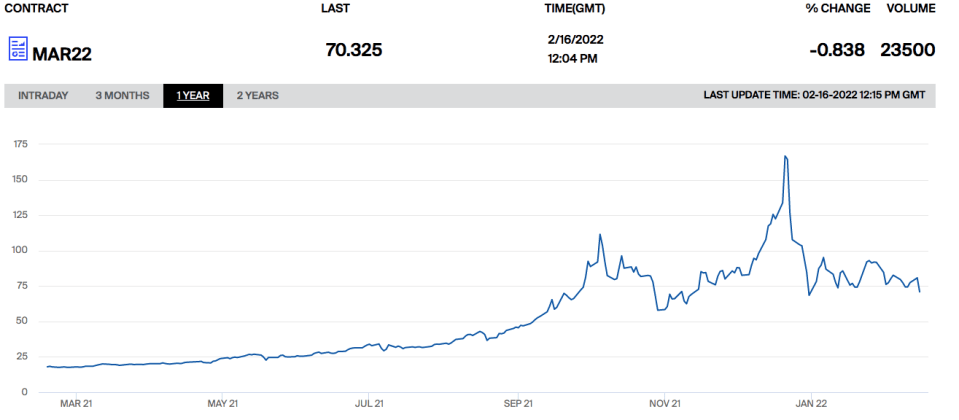EU President: Europe can deal with partial disruption to Russian gas flows

The European Union (EU) could cope with a partial disruption to gas imports from Russia, argued the European Commission’s President Ursula von der Leyen.
She told reporters: “Our models now show that for partial disruption or further decrease of gas deliveries by Gazprom, we are now rather on the safe side.”
Deepening tensions between the Kremlin and the West over Ukraine have raised concerns about Russian gas flows to Europe, which supplies around 40 per cent of the continent’s natural gas.
Von der Leyen said Russia’s military build-up near Ukraine had emphasised the need for Europe to curb reliance on Russian gas, and this would be aided by its planned shift to renewable energy.
She also recognised that halting Russian gas supplies due to sanctions or disruption would still require additional measures from EU nations.
The trading bloc’s rules require all of its members to have a plan to respond to a gas supply crunch.
This includes potential government interventions such as curtailing industrial facilities to prioritise gas supplies to households.
Recent studies from think tank Bruegel and investment bank Stifel suggest Europe would struggle to maintain energy supplies in line with rebounding post-lockdown demand without Russian supplies.
However, the potential short-term impact of a disruption to Russian gas supply has eased as Europe heads towards spring, when demand for gas-fuelled heating typically declines.
Europe seeks new partners amid escalating geopolitical tensions
EU officials have recently been looking for alternative partners to boost its flagging gas supplies, amid fears that Russian supplies could be halted following conflict by necessary sanctions or disruption caused by conflict.
Earlier this month, the commission’s energy chief Kadri Simson brought together ministers from across Europe to discuss potential measures to mitigate future energy crises.
The trading bloc has also held talks with Qatar, Egypt, Azerbaijan, Nigeria and South Korea about increasing natural gas and LNG supplies through contract swaps and additional shipments.
The US has been a key importer of LNG to Europe over the past three months, with 45 per cent of Europe’s imports coming from across the Atlantic.
Last week, Japan also revealed it would divert some LNG cargoes to Europe in response to EU and US requests.

In the run up to Christmas, wholesale costs soared in Europe amid tight supplies and growing demand in economies emerging from the COVID-19 pandemic.
Lower than expected imports from Russia exacerbated the crisis, with Gazprom failing to hit its export targets to the region last year.
Europe was eventually rescued from escalating fears of a blackout by a flotilla of US LNG tankers in December, which helped halve record gas prices over January – even if prices still remain historically high.
Overall, European LNG imports hit a record high of around 11bn cubic meters last month – with storage capacity increasing from 51 to 75 per cent.
In contrast to lower natural gas supplies – which are around 34 per cent full – processing the resurgent LNG flows to usable gas is the key bottleneck issue.
The Nord Stream 2 pipeline, which would double exports from Russia to Germany and provide 55bn cubic metres of gas per year, also awaits approval from German and EU regulators.
Russia has been accused by the International Energy Agency (IEA) of throttling supplies into the continent, claims President Vladimir Putin has dismissed as “politically motivated blather.”